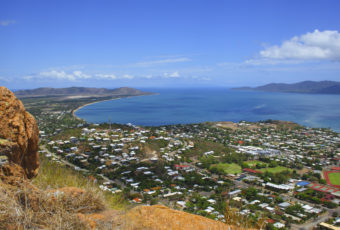University of Newcastle's climate change discovery
University of Newcastle hydrodynamics expert, Dr Mike Meylan, part of the research team behind a recent groundbreaking discovery that linked the effects of storm-generated waves on sea ice behaviours, said the finding could help predict future global climate trends.

The study, Storm-induced sea-ice breakup and the implications for ice extent, published in Nature, measured the impact of storm-driven waves on the edge of sea ice in the polar regions, finding large waves had a greater impact on breaking sea ice than originally thought.
On World Environment Day, Thursday, June 5, Dr Meylan said the dynamic role of waves was understudied and his team’s research could be crucial in forecasting global warming in the future.
“Climate change is a difficult thing to model; we only get one shot at guessing the global environment in one hundred years,” Dr Meylan said.
“Sea ice has an important role in regulating the global environment and current climate models fail to capture the cause of expansion and retreat of sea ice in both polar regions.
“This new research sheds light on the power of large waves in breaking up sea ice at a much farther distance from the ice edge than predicted, and could be the missing link to understanding the behaviours of sea ice today and in the future.”
Researchers used sensors dropped onto ice floes to measure and transmit the energy from waves at the sea ice margin, finding that storms hundreds of kilometres away were causing large waves that fractured sea ice at an astounding distance from the ice edge of the Arctic and Antarctica.
Previous studies have predicted that changes in the atmosphere will lead to increased wave heights along the sea edge of both regions in the future, accelerating sea ice retreat and posing significant threats to the global environment.
“The weather in places like Antarctica can have profound effects on that experienced by countries like Australia so it is important that we take a global approach when developing climate models.
“Wave research could be pivotal to improving our understanding of future trends and could help advance model accuracy for a better indication of the Earth’s climate in the future.”
Within the Faculty of Science at the University of Newcastle, School of Environmental and Life Sciences is one of the largest in the university and has a diversity of science-based disciplines. The academic staff are all specialists in their fields and are committed to delivering the highest quality outcomes in research and teaching. The school strives for excellence and provides a unique opportunity for science training via the rich multi-disciplinary profile of its staff and facilities.
Main fields of study include at the University of Newcastle Faculty of Science and Information Technology include
- Biological, Chemical and Marine Sciences
- Biotechnology and Food Science
- Exercise and Sport Science
- Earth Science
- Environmental Science and Resource Management
- Mathematics and Statistics
- Physical Science

































Ask A Question
Ask us about your program of interest, or if you have a question about our services.
CONTACT US TODAY